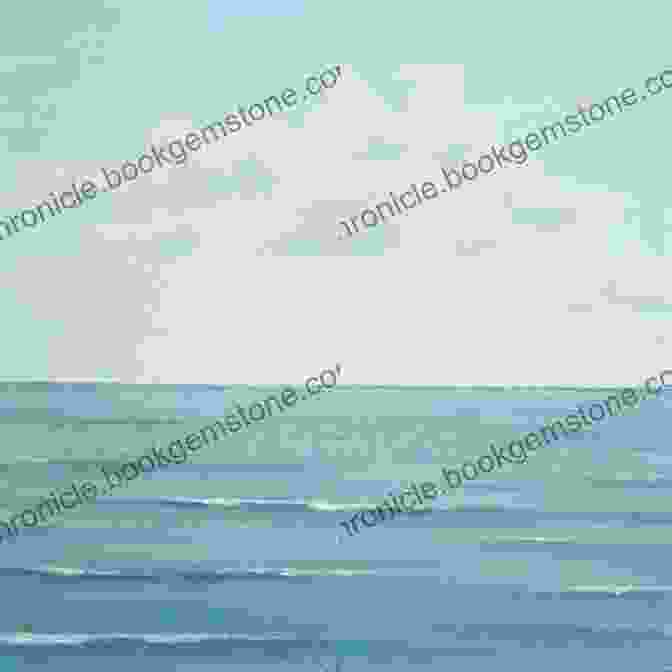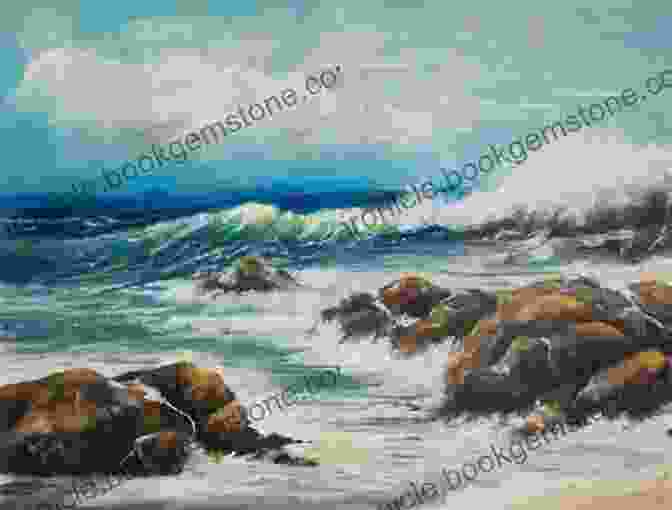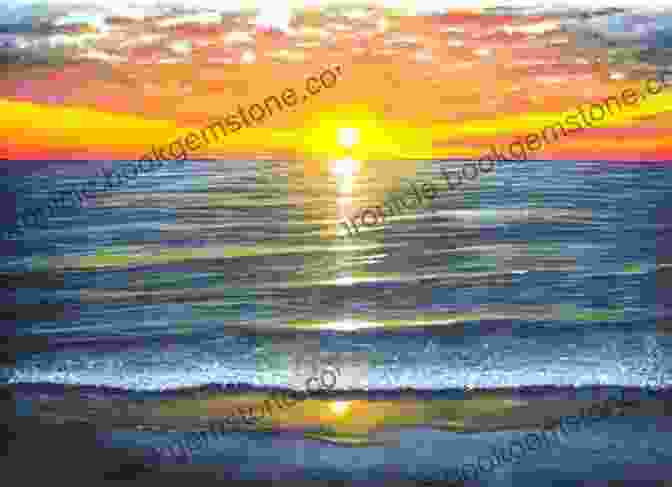The allure of the sea has captivated artists for centuries, inspiring countless masterpieces that strive to capture its ever-changing moods and majestic beauty. Among the various mediums used to depict the ocean's grandeur, oil painting holds a special place, offering a rich palette and unparalleled versatility for rendering the subtleties of light, color, and texture.
4.6 out of 5
| Language | : | English |
| File size | : | 151247 KB |
| Screen Reader | : | Supported |
| Print length | : | 80 pages |
In this comprehensive guide, we delve into the enchanting world of seascape painting with oils, providing insights into the techniques and principles that will empower you to bring the ocean's beauty to life on canvas. From understanding the nuances of brushwork and color mixing to mastering the art of composition, we'll guide you through every step of the process.
Brush Techniques for Seascape Painting
The brush is your primary tool in oil painting, and choosing the right brush for each aspect of your seascape is crucial. For painting the sea, consider using a filbert brush for its versatility and ability to create both broad strokes and fine details. Round brushes are ideal for painting waves and other small objects, while flat brushes can be used for creating sharp lines and edges.
When applying paint to canvas, experiment with different brushstrokes to create varied textures and effects. Stippling can be used to create a rough, frothy surface, while glazing can produce smooth, transparent layers. Blending techniques, such as wet-on-wet and dry-on-wet, allow you to create seamless transitions between colors, adding depth and realism to your seascape.
Color Mixing and Palette Selection
Capturing the true colors of the sea and sky requires a keen eye and a deep understanding of color theory. The ocean's hues can vary drastically depending on the time of day, weather conditions, and water depth. To accurately depict these variations, it's essential to have a comprehensive palette of colors at your disposal.
A basic seascape palette should include a range of blues, greens, yellows, and oranges, as well as white and black. By mixing these colors in varying proportions, you can create an infinite array of shades to suit your seascape's unique lighting and atmosphere. Experiment with warm and cool colors to create contrast and depth, and don't be afraid to mix in small amounts of other colors to achieve specific effects.
Composition Principles in Seascape Painting
Composition is the art of arranging elements within your painting to create a visually pleasing and cohesive image. In seascape painting, the horizon line and vanishing point play important roles in guiding the viewer's eye and establishing a sense of perspective.
Consider using the rule of thirds to divide your canvas into thirds horizontally and vertically. Placing key elements along these lines or at their intersections can create a dynamic and balanced composition. Leading lines, such as a winding coastline or crashing waves, can draw the viewer's attention towards specific areas of the painting.
Capturing the Sea's Moods
The sea is a constantly changing entity, and its appearance can transform dramatically depending on the weather and time of day. To effectively capture the sea's moods, it's crucial to observe its characteristics under different conditions.
A calm sea with gentle ripples can be painted with subdued colors and soft brushstrokes. A stormy sea with crashing waves requires more dramatic brushwork and a wider range of values. The key is to study the sea's behavior and translate its movements and textures onto canvas through your brushwork and paint application.
Painting the Sky in Oils
The sky is an integral part of any seascape, providing a backdrop that can enhance or contrast the beauty of the sea below. Painting the sky effectively requires a different approach than painting the sea, as it involves capturing its vastness and ethereal qualities.
Start by establishing the horizon line and the sky's overall color scheme. Use a variety of brushstrokes and techniques to create clouds, paying attention to their shapes, textures, and movement. Experiment with blending and glazing to create depth and atmospheric effects. The sky's colors can vary significantly throughout the day, so observe the actual sky and adjust your palette accordingly.
Tips for Beginners
Seascape painting can be a challenging but rewarding endeavor. Here are a few tips for beginners to help you get started:
- Start with small, manageable paintings. This will allow you to focus on developing your brushwork and color mixing skills without feeling overwhelmed.
- Don't be afraid to experiment. Seascape painting is all about capturing the unique beauty of the ocean, so don't limit yourself to conventional techniques. Try different brushstrokes, colors, and compositions to find your own style.
- Study the work of other seascape painters. Analyzing the techniques and approaches of established artists can provide valuable insights and inspiration.
- Take your time. Oil painting requires patience and multiple layers of paint. Allow each layer to dry completely before applying the next, and don't be afraid to make adjustments as you go.
Seascape painting with oils is a captivating art form that offers endless possibilities for artistic expression. By mastering the techniques and principles outlined in this guide, you can unlock the beauty of the sea and sky and bring their serene landscapes to life on canvas. With practice, patience, and a keen eye for observation, you'll be able to create stunning seascapes that capture the essence of the ocean's ever-changing moods and inspire awe in viewers.
So embrace the challenge, gather your brushes and paints, and embark on your own seascape painting adventure. The beauty of the sea awaits your artistic touch.
Image Gallery





































































































































































































































































































































































































































































































































































































































